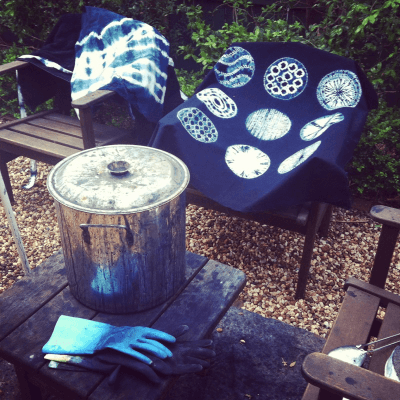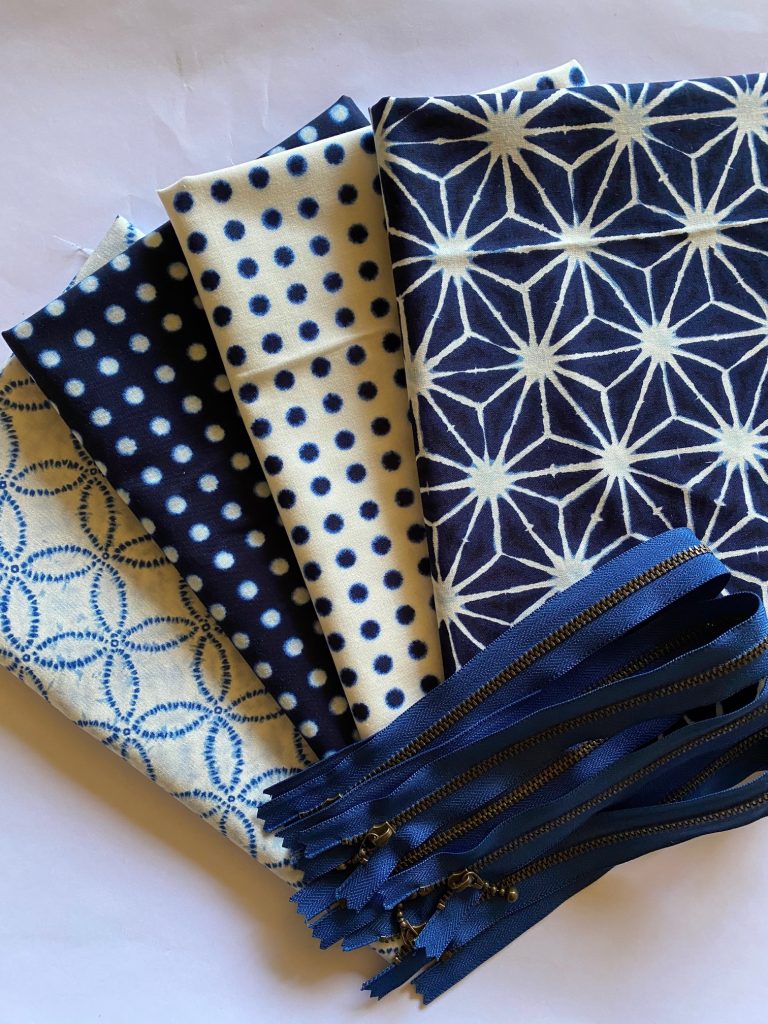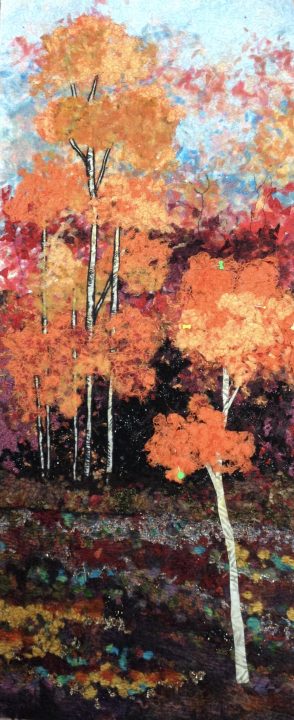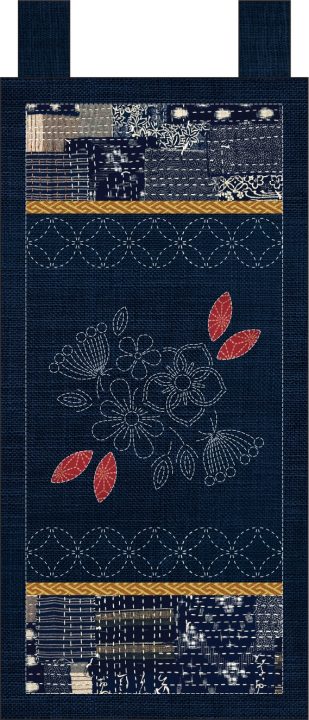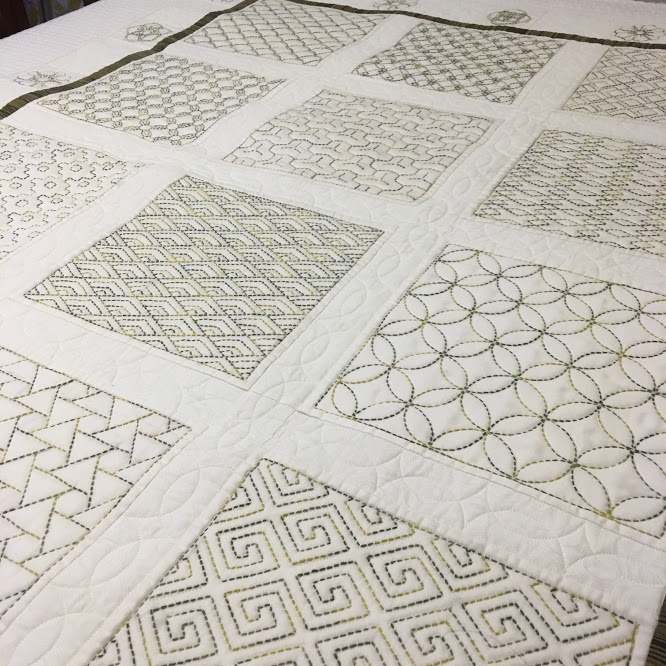We recently got in touch with our friend Jane Postle to check out some of her locally-made Shibori.
(Updated 09/06/2021)
Shibori has never been too far from our thoughts. During our travels through Japan earlier this year, we were very impressed by the Arimatsu Shibori Kaikan, a Shibori museum in Arimatsu, Nagoya.
Nowhere else in Japan is there such a central focus on the art and techniques of shibori than in this gorgeous little hamlet, nor such a dedicated passion; they even hold an annual Shibori Festival.
We were quite affected by their passion for this art, and the Shibori Festival is definitely up there on the “bucket list.”

A popular misconception is that shibori is merely a Japanese version of tie-dyeing. This is inaccurate, as there are many techniques that are associated with shibori. Let’s take a look.
‘Wring, Squeeze, Press’.
Shibori is the Japanese word that can translate to mean wring, squeeze, press–for a number of ways of embellishing textiles by shaping cloth and securing it before dyeing.
The cloth is treated as a three-dimensional form, involving crumpling, stitching, plaiting, plucking and twisting. After the cloth is ‘shaped’ by these methods, it can be secured in a number of ways, such as binding or knotting.
This is all done with one goal in mind: to explore the pliancy of a given textile and thus its potential for creating a multitude of shape-resisted designs.
The key to getting wonderful results from shibori dyeing is to work with the limitations, and to allow them full expression. The special characteristic of shibori resist is a soft or a blurry-edged pattern. The effect is markedly different from the sharp-edged resist obtained with stencil, paste, or wax.
So if you ever try your hand as shibori, be aware that an element of the unexpected is always present. Think of it like a potter firing a wood-burning kiln. All the technical conditions have been met, but what happens in the kiln may be a miracle or a disaster.
All the variables attendant on shaping the cloth and all the influences that control the events in the dye vat conspire to remove some–but not all, thankfully!–of the shibori process from human control.
In fact we’ll even venture to say that it’s the element of chance that gives life to the shibori process. This is its special magic.
1. Shibori in Practice
It was a treat to not only witness first-hand some genuinely local shibori being produced, but also to see how these designs could be used to make stunning silk kaftans and cotton throw cushion covers.
Jane Postle has been studying shibori techniques for well over ten years, becoming a true artist in her own right.


Stitching and folding silk fabric before being placed into indigo dye. Silk is particularly amenable to resist-dyeing. (See the kaftans for the final results.)

From the vats. The prepared pieces drip-dry before being opened and rinsed. Note the different methods on display.

This fabric has been untied prior to a final rinse.

Each method has unique results, and the reveal is an exciting moment. This fabric had been folded and clamped.
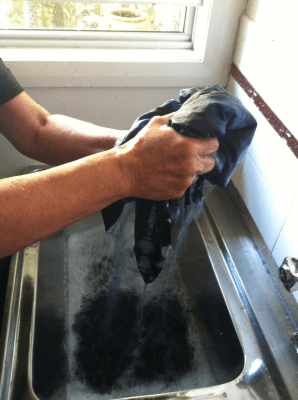
The undone fabric is given a final rinse.

Some gorgeous results set out to dry.

“It’s the element of chance that gives life to shibori.”

Beautiful Shibori.

More lovely results.
2. Some Finished Shibori Products

Simply gorgeous–one of the Shibori Throw Cushions made from one of the pieces above.
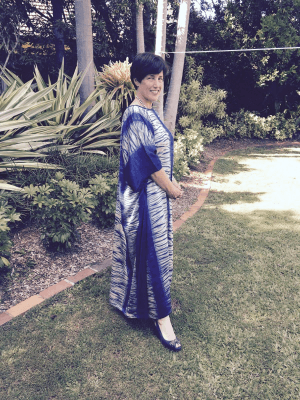
One of three lovely Shibori Kaftans.

Shibori Kaftan – second design.

A third Shibori Kaftan design.
Kaftans
Hand-made shibori silk kaftans are available from Indigo Niche for $450 each. Each kaftan’s shibori design is completely unique, as perhaps despite an author’s best intentions, no two pieces of shibori are ever alike. Please email sales@indigoniche.com for more information. Stock is limited.
Cushion Cover Packs
Shibori cushion designs are available from Indigo Niche in packs of 4.
Each Shibori Cushion pack contains:
- 4 x 1/2 metres of Shibori Fabric
- 4 Blue 16″ Metal Zips
For more details and further options send an email to sales@indigoniche.com
‘Til next time…
Sue

